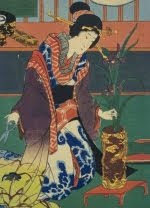
If you are in Oslo this weekend, make sure not to miss the 2011 Rose Days arranged by the Norwegian Rose Society. It takes place in the Freia park, a secluded garden at the Freia chocolate factory.
There will be an ikebana exhibition in the Freia Hall. My ikebana teacher Lisbeth Lerum and I will be there to meet you. I'm doing a series of ikebana arrangements inspired by paintings by Edvard Munch.
The exhibition is open this Saturday and Sunday only, from noon to 5 pm. Welcome!
Photo update
The Edvard Munch ikebana series:
Under The Chestnut Tree
Four Girls
The Dance of Life
The Flower of Pain
Photo update
The Edvard Munch ikebana series:
Under The Chestnut Tree
Four Girls
The Dance of Life
The Flower of Pain














